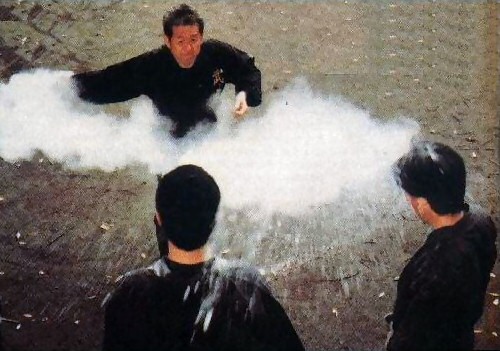

Historical Tales | News | Vampires | Zombies | Werewolves
Virtual Academy | Weapons | Links | Forum
 |
 |
Historical Tales | News | Vampires | Zombies | Werewolves Virtual Academy | Weapons | Links | Forum |
 |
The metsubishi is an ancient precursor |
Today's options are considerably more effective and convenient than those of the past. Pepper spray typically comes in plastic containers that are easy to carry and require no great expertise to deploy. The strength of pepper spray is usually expressed in two ways: Scoville Heat Units (SHU) and capsicum concentration. SHU is a measure of how much something has to be diluted before no capsaicin is detectable. Most law enforcement pepper sprays fall into the 500,000 to 2 million SHU range. Hotter sprays have faster effects. Another variable is the concentration of capsicum. Most law enforcement sprays have a concentration of 5 percent to 10 percent. Higher concentrations mean longer-lasting effects. Pepper spray comes in three spray patterns: stream, fog and cone.
Pepper spray is no good to you if you don't practice with it. Get a few containers, and take the first one outside. Find a target about five or six feet off the ground and try to hit it with a stream of spray. See how far away you can get from your target while maintaining good accuracy. Note how the wind affects your aim. Also, work on your speed, so that if you're ever jumped you can quickly raise the canister and hit your target.
Vampires: A shot of pepper spray to the face of a vampire causes pain and temporary blindness. Accuracy is important, so use a spray with a stream pattern. If you're walking in an area of likely vampire activity, such as a city street at night, keep the canister in your hand rather than clipping it to a belt or putting it in your pocket.
As you might expect, pepper spray is less effective against hunting packs. In this case, your best bet is to spray the scout vampire and flee the area before the others can attack.
Zombies: Pepper spray will irritate and disorient a lone zombie. Try to hit it before it can get within arm's reach of you and then run away as fast as you can.
If you happen to wind up surrounded by zombies, hit the closest ones with the pepper spray first and use self-defense kicks to fight your way out as the spray begins to do its work. A spray with a cone pattern may be best in this scenario.
Overall Effectiveness: 
Lone Vampire: |